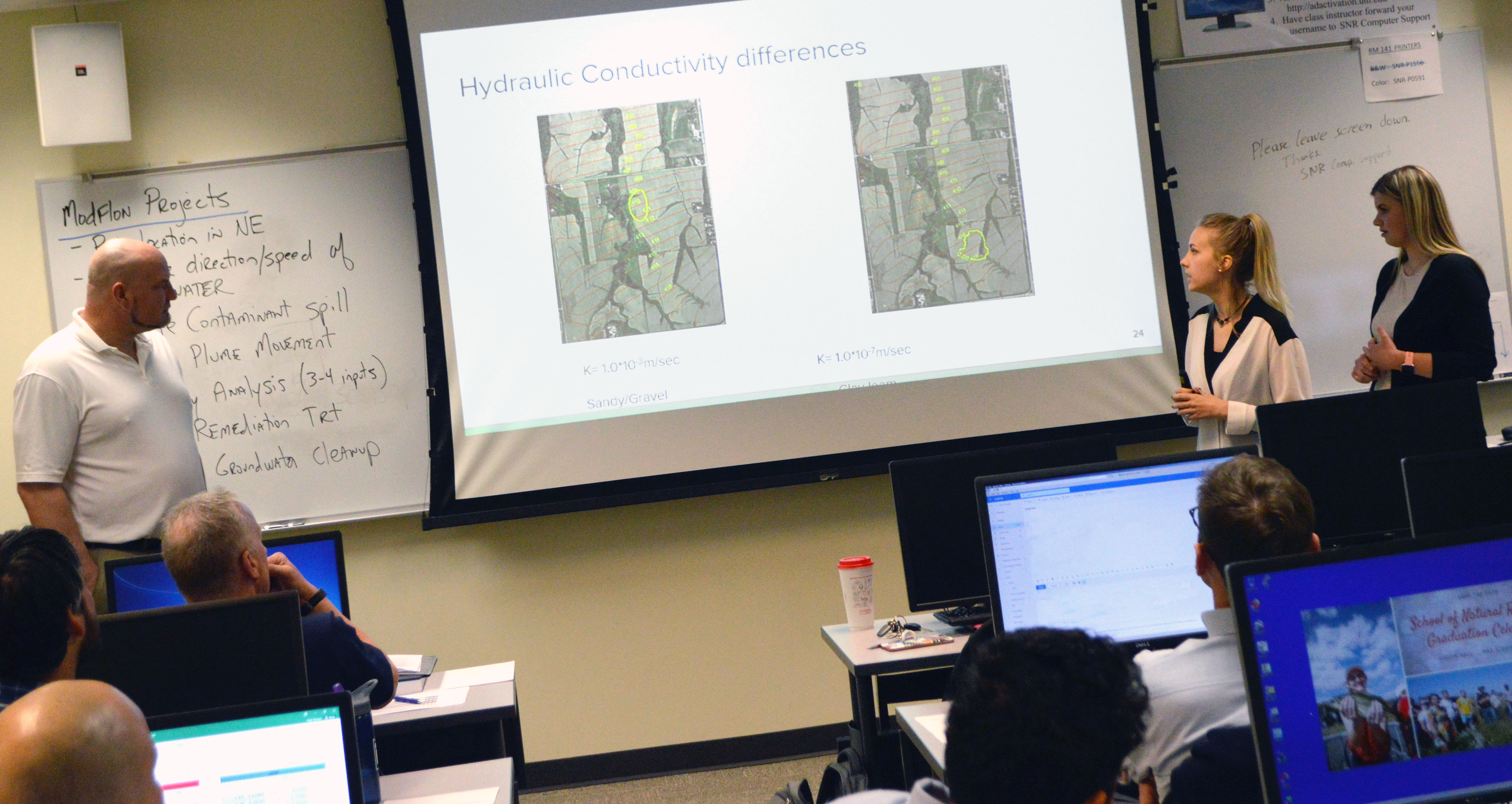
Most wore professional attire: dress pants and button-down shirts or dresses and shoes that clicked on the tile floors of Hardin Hall 141. They gave their final presentations, solutions to created environmental contaminant spills in pockets around the state, to a classroom of peers who had grown close over the spring semester.
The 10 graduate and undergraduate students in Natural Resources 451: Soil Water and Environmental Chemistry, separated into four groups, took their turns presenting their scenarios, their methods and their proposed solutions, and then fielding questions from their classmates and professor, Steve Comfort, soil and water chemist with the School of Natural Resources.
“All of the (environmental restoration courses) before this dealt with math and theory,” said Rob Schroeder, senior environmental restoration science major at the time and now a graduate. “This was a real-world example.” Real experience.
Comfort said the goal of the class is to teach students what happens to organic contaminants once they are released into the environment. “How are they absorbed? Degraded? Transported?,” he asked, “What is the chance that these chemicals will get into and move with groundwater?”
The students learned about those processes during the semester, but then put that knowledge to work using a U.S. Geological Survey software called MODFLOW, or modular finite-difference flow model, for a final project. At the basic level, the program simulates and predicts groundwater conditions and groundwater to surface-water interaction, according to the USGS.
Using the program and models are important pieces to helping students synthesize what they learned over the course of the semester, Comfort said.
“As I listen to the students problem solve while working on their models, I hear them using the concepts and equations they learned earlier in the semester,” he said. Only one of the 10 students had used the program before the class, but they all walked out of it able to list “MODFLOW experience” on their resumes.
“They’ve come a long way in fourth months,” Comfort said with a smile.
For their projects, the students were required to pick a Nebraska location; determine the direction and speed of the groundwater movement; simulate a contaminant spill; predict how the contaminant plume would spread; analyze three to four possible treatment options; select one; and then use MODFLOW to simulate the groundwater cleanup.
Their PowerPoints were GIF-heavy, showing the various plume dispersals over time and how long it took for those chemicals to degrade to the Environmental Protection Agency’s acceptable-level standard. The teams didn’t hold back their creativity, with students providing elaborate back-stories for the contaminant spills, which ranged from benzene (one of the 20 mostly widely used chemicals in use, but one also used as an additive in gasoline) to atrazine (a crop herbicide) to toluene (used to tan leather, but also in aviation and automotive fuels).
The students included the human health ramifications of the contaminants, but also previous research conducted on the chemical, the details for how the chemical they chose interacts (or doesn’t) with water and potential remediation options.
“The class seemed hard and intimidating, honestly, at the beginning,” said Marisa Mika, junior environmental restoration science major, after the presentations wrapped up. But she realized how much she did know as the project unfolded.
Two of the graduate students gained the context they’d been missed from previous work or coursework.
“I was the one student who’d used MODFLOW,” said Yaser Kishawi, a biosystems engineering graduate student, and a former environmental specialist with the Palestinian Water Authority. “I was using these values without fulling understanding why. … Now I know the connection between the parameters” set in MODFLOW and the outcomes of remediation.
“There is a lot of science to use to find ways to solve issues in a reasonable and scientific way,” added Agustin Olivo, another biosystems engineering graduate student.
Based on what the students had to say, Comfort could consider the class goal achieved.
Shawna Richter-Ryerson, Natural Resources